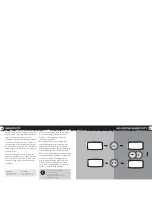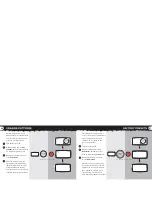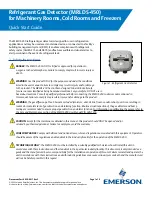
36
37
A trowel, knife or small spade are good
tools for recovering targets.
Once a target has been located, clear the
surface of loose material and check again
for a signal. If there is no signal then the
target is amongst the surface material. In
this case, search the surface material until
the target is located. If the target is still in
the ground, check again with pinpoint.
The aim, when digging, is to leave the area
of ground exactly as you found it. Using a
sharp tool, cut a neat portion of grass or soil
and place it on a plastic sheet. This prevents
the material being scattered around and
allows the hole to be refi lled.
Check the hole for the target. If it is not in
the hole, place the detector on the ground
with the coil fl at, pick up a handful of soil
and pass it over the coil. Be sure not to wear
rings, bracelets or a watch which will produce
a signal. Repeat this procedure until the
target is located.
Ensure that no other targets remain, then
refi ll the hole. All soil and portions of grass
on the plastic sheet should be returned
to the hole as neatly as possible. Step lightly
on the soil to compact it.
A long blunt-tipped screwdriver is a good
tool for soft ground. Probe the soil to fi nd
the exact location of a target, if it is very
shallow, simply prise it out.
Ask for permission before searching on
private property.
Leaving holes, or a scarred area may result
in action being taken to prevent the use
of metal detectors. Please ensure that you
leave an area of ground as it was found.
Try to take all rubbish.
Summary of Contents for Minelab X-Terra
Page 1: ......
Page 40: ...72 50 30 72 ...
















































